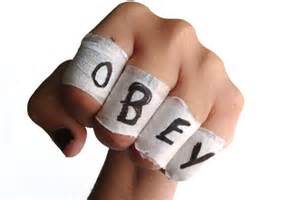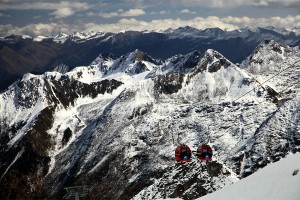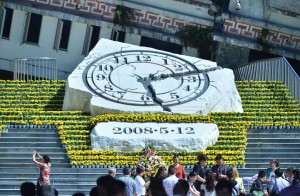A reflection of the German kind
For our final unit in Language Arts, we read a play named The Importance of Being Earnest, by Oscar Wilde. The play was quirky, comedic and filled with cool situations, making it a memorable experience to read and also watch on the big screen. After reading it, we had to display our understanding of the play by creating a portfolio of different responses to the play. We analyzed each act of the play, and that helped me in developing a thorough understanding of the play, which would later be tested in our End of the Year Language Arts exam. Besides analyzing each act, I also included fun stuff, such as a character profile for each of the main characters, saying what they are like and what I would have them dress like. I also had a creative response to each act, varying from a diorama to an animated film. To end it all, I wrote a film review of Importance of Being Earnest, which I thought was better than the written form, as plays are meant to be seen. Overall, it was a fun experience. Now, if you ask me anything about this play, I’ll give you a good answer. Hopefully.
Click on the links below to find out more about the play and it’s playwright!
http://cmgww.com/historic/wilde/
The Importance of Being Earnest

Opus est completum!
We have just completed our unit on Power and Leadership, and now I will reflect on:
- How what learnt connected with what I already knew.
- What extended my knowledge?
- What challenged me?
HOW DID MY NEW KNOWLEDGE CONNECT WITH ME?
Throughout the unit, as I was learning about power and leadership, I felt that what I was doing connected to me in some way. For example, I already knew that power and leadership were somewhat dependent on one another, as a good leader can use his power well and a bad leader can use his power badly, so when we began discussing traits of a leader, I had some background knowledge on what to expect from a good or bad leader. When it came to presenting information, I felt that the way that the information was meant to be displayed was familiar to me, as I knew how to create artistic ways of presenting new knowledge. Also, when I started to analyze Osama Bin Laden, I felt that, even though I was analyzing a distorted version of my religion, it still made the unit have a more personal affect on me.
WHAT EXTENDED MY KNOWLEDGE?
When I began the unit, I thought I had a deep understanding of Power and Leadership. However, I was soon proved wrong as I realized that power can be taken in many ways based on people’s objectives. When I was analyzing the movies Captain Phillips and The Power of One, I discovered that power can be used in other ways rather than wealth or strength, such as knowledge or language. I also figured out that power can be used badly due to past experiences, and that is what I analyzed in my essay, along with people’s objectives. Lastly, I found it as a good way to exercise my writing abilities, and go further toward analytical writing rather than creative writing.
WHAT CHALLENGED ME?
Many things challenged me through the course of the unit. Before I began writing my essay, I had to develop a new way of analyzing sources to help create a viable thesis statement. This involved gathering a broad range of ideas, gathering the similarities between them, and then using them as evidence to help support my thesis statement. Up to writing my essay, I used to believe that more ideas resulted in more quality in the essay. However, after submitting my draft, I realized that too many ideas can make the essay lack focus, and so I needed to find a way to support my thesis statement using less ideas and more focus. I also used to believe that more words resulted in more quality as well, but then I realized that, in order to build focus, I needed to get my ideas through in as little words as possible.
Overall, I found the tasks that we took part in very engaging, and I think that they greatly enhanced my view on power and leadership.
P.S. The title is Latin for “the job is complete”.
Knowledge, Assemble!
Over the past few weeks, we have been working on our Power and Leadership unit in Language Arts class. We worked on projects demonstrating a certain aspect of power, and now we are working on an essay to confirm our knowledge of power, leadership or both. My thesis statement for the essay is “the way people use their power, either for the good or bad, depends on their individual needs and goals.” I came to this thesis statement after compiling my notes and analyzing any similarities between the literature I read and the movies I watched. I saw that each character in the sources I was analyzing had a specific objective that influenced the way he used his power. After witnessing this, I became interested in the topic, and created my thesis statement. I have started work on my draft, and am going to use the sources I read and watched as evidence to support my thesis statement. I will patch in once more when the job is done.

Power and Leadership: What Did I Learn?
Last Friday, my classmates and I presented our projects on power and leadership. My infographic received applaud, and many people learnt from it. However, in this post, I wish to talk about what I learnt from other people’s presentations. One of my classmates, Camille, did a very intriguing presentation on the power of groups. I learnt about how the individual affects the group, but also how the group affects the individual, and how power in groups isn’t always a good thing. Joey’s presentation on how power causes corruption taught me that power can define a person if the person cannot control it him/herself. In Mert’s blog post on edublogs, which you can read at http://mertgirginer.edublogs.org/2015/10/07/power-leadership/ , he talked about Osama Bin Laden in a different lens from how I saw him. He talks about how he was very kind and generous but became corrupted, and also described many events in his life that could have contributed toward Osama’s outlook. Jay’s Prezi that he put together, which was a “fun” power point, talked about many revolutions that occurred in China, and how the people involved displayed power and leadership. From Margot’s visually appealing sketch note, I learnt about the characters in the books she was reading and the movie she watched, and how the three all displayed aspects of power and leadership. Bruce’s interactive presentation, which he carried out using paper interpretations of characters from the book “Animal Farm”, talked about the pig in the book, Napoleon, and how he, when he came to power, became greedy. I learnt that power can be twisted into different positions, and that one must be able to control their power before they can use it. Jan displayed creativity through her “experiment” that she did on us. Each of us got a card with a color on it. People who had the same color sat in one group and so on. Everyone got lollipops, but then had to share them with others. The end result was that one person had an exceeding amount of lollipops than the rest. From her presentation, I learnt that power isn’t always fair, and that the person in charge can do things that suit him rather than the majority. Lastly, Taewoong’s presentation compared and contrasted the books “The Wave” and “Che Guevara”, and also the movie Gladiator. He analyzed the characters from each source to see how they showed power and leadership.
Overall, it was a fun project. I had interest in me throughout, and I am glad I learnt so much from others, and I hope they learnt as much from mine.
Reflection on trip to the Tibetan Autonomous Region of Sichuan
Last Sunday, the thirteenth of September, my classmates, teachers and I embarked on a field trip toward the Tibetan Autonomous Region of Sichuan. It was the first time I would leave my parents for more than just a few hours. The trip was four days long and it was quite fun. The environments we covered were varying and beautiful, and we discovered many different lifestyles that people in Tibet follow. We visited three significant spots and explored them. We stopped first at Wenchuan Earthquake Museum, which chronicled the effects of the deadly earthquake which struck Sichuan in 2008. After that, we settled in a village home stay, high up in the mountains. Then, we went to our final destination for the trip, Hei Shui, which was very beautiful.
 The drive from Chengdu to the Wenchuan Earthquake Museum was around two hours. The scenery on the way there was beautiful, but once we reached, it wasn’t so cheerful. The first thing that caught my eye when we parked the bus was a ruined school, barely standing. They were remains from the Earthquake from 2008. We went into the museum, and saw videos which showed the horror of the disaster. We also saw gravestones of the first responders during the Earthquake. They were the first to act and save lives when the Earthquake struck. It was heartbreaking, as I actually felt the tremors of the Earthquake, since I was in Beijing at the time.
The drive from Chengdu to the Wenchuan Earthquake Museum was around two hours. The scenery on the way there was beautiful, but once we reached, it wasn’t so cheerful. The first thing that caught my eye when we parked the bus was a ruined school, barely standing. They were remains from the Earthquake from 2008. We went into the museum, and saw videos which showed the horror of the disaster. We also saw gravestones of the first responders during the Earthquake. They were the first to act and save lives when the Earthquake struck. It was heartbreaking, as I actually felt the tremors of the Earthquake, since I was in Beijing at the time.
 After our time at the Earthquake museum was over, we rode our bus to a village that was close by. The ride was not long. At the village, our guides told us about the history of the village, and we also climbed up a mountain. The history of the mountains was explained, and we learnt that the mountains were once under the sea, but that collisions between continental plates formed them. We also learnt about the waterways that interconnected under the village, and explored the labyrinth of underground gates hidden below the village. I learnt that the gates were used to defend against other tribes in the area.
After our time at the Earthquake museum was over, we rode our bus to a village that was close by. The ride was not long. At the village, our guides told us about the history of the village, and we also climbed up a mountain. The history of the mountains was explained, and we learnt that the mountains were once under the sea, but that collisions between continental plates formed them. We also learnt about the waterways that interconnected under the village, and explored the labyrinth of underground gates hidden below the village. I learnt that the gates were used to defend against other tribes in the area.
The next day, after a healthy, traditional Tibetan breakfast, we headed for Hei Shui. The bus ride lasted 5 hours. We reached the town at a time when it was dusty due to construction. There were Tibetans wearing traditional clothing as well. During our stay at Hei Shui, we visited a Monastery at the top of a mountain, which had been there for over a thousand years. The scenery from the top was beautiful, and the patterns on the walls and roof of the Monastery showed traditional art. There were statues of many deities that the Tibetan Buddhists believed in. Another beautiful experience at Hei Shui was the glacier we visited. It was four thousand, eight hundred and sixty meters high, and it was quite icy. The glacier was over twenty thousand years old. The experience there provided for some very picture worthy moments.
This trip was my first time away from my parents, and also made me feel very independent. I learnt about Tibetan values, food, culture and Buddhist beliefs. I also learnt about the geology of Hei Shui and the mountains surrounding the area. Overall, in my opinion, the trip was an exhilarating experience, which provided a taste of the world as well as a piece of Tibetan values. I hope I get to learn more about Tibetans in the future, as their culture and their beliefs are very colorful.
Sources:
https://www.google.com.hk/search?newwindow=1&safe=strict&biw=1366&bih=667&tbm=isch&sa=1&q=Hei+Shui+mountains&oq=Hei+Shui+mountains&gs_l=img.3…14448.30949.0.31147.30.17.10.0.0.0.545.1791.0j10j5-1.11.0.ecynfh…0…1.1j4.64.img..23.7.373.N6Hoy_47Row#imgrc=aD99BO1NOKPB1M%3A
https://www.google.com.hk/search?newwindow=1&safe=strict&tbm=isch&q=Wenchuan+earthquake+museum&spell=1&sa=X&ved=0CBgQvwUoAGoVChMI0vHo7LP_xwIVjJ2UCh245g5d&dpr=1&biw=1366&bih=667#imgrc=bpAv9IfZ4C8nkM%3A
